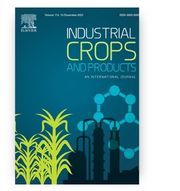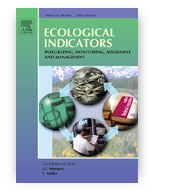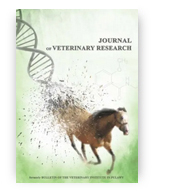
Research papers of the month – September 2023
We present the highest-score research papers of September 2023. These papers have ben published in journals with the highest Ministerial score – 200 points.
Magdalena Karwańska; Alina Wieliczko; Anders Miki Bojesen; Kasper Rømer Villumsen; Eva Krzyżewska-Dudek; Anna Woźniak-Biel
Veterinary Research
Ministerial score = 200.0
Journal Impact Factor (2023) = 4.4 (Q1)
 Gallibacterium anatis biovar haemolytica is a bacterium that is frequently associated with infections of the reproductive tract and respiratory system in poultry. To assess the current prevalence and resistance profile of these bacteria in Poland, we collected and investigated 63 strains of Gallibacterium from diseased domestic poultry flocks including geese, laying hens, breeding hens and an ornamental hen. Detailed characterization of the isolates included the analysis of phenotypic antimicrobial resistance profiles and biofilm formation ability. Furthermore, the genetic background of 40 selected isolates regarding the presence of virulence and antimicrobial resistance genes and mobile genetic elements was determined. All investigated isolates were multidrug resistant, most prominently to β-lactams, fluoroquinolones, sulfonamides and macrolides. A total of 48 different resistance profiles were detected. Of all isolates, 50.8% formed a strong biofilm, where strains isolated from geese appeared to be better at biofilm formation than strains isolated from laying and breeding hens. Single-nucleotide polymorphism genotyping revealed that G. anatis bv. haemolytica strains are restricted in host and geographical distribution, and the geese isolates showed greater phylogenetic similarity. Whole genome sequencing enabled identification of 25 different antimicrobial resistance determinants. The most common resistance genes were tetB, blaROB-1, and blaTEM-1 which may be located on mobile genetic elements. All isolates possessed the toxin gene gtxA, and the fimbrial gene flfA was identified in 95% of strains. Our results indicated that all G. anatis bv. haemolytica isolates showed multidrug resistant phenotypes. Strains isolated from geese were characterized by the highest percentage of isolates resistant to selected antimicrobials, probably reflecting host-related adaptations.
Gallibacterium anatis biovar haemolytica is a bacterium that is frequently associated with infections of the reproductive tract and respiratory system in poultry. To assess the current prevalence and resistance profile of these bacteria in Poland, we collected and investigated 63 strains of Gallibacterium from diseased domestic poultry flocks including geese, laying hens, breeding hens and an ornamental hen. Detailed characterization of the isolates included the analysis of phenotypic antimicrobial resistance profiles and biofilm formation ability. Furthermore, the genetic background of 40 selected isolates regarding the presence of virulence and antimicrobial resistance genes and mobile genetic elements was determined. All investigated isolates were multidrug resistant, most prominently to β-lactams, fluoroquinolones, sulfonamides and macrolides. A total of 48 different resistance profiles were detected. Of all isolates, 50.8% formed a strong biofilm, where strains isolated from geese appeared to be better at biofilm formation than strains isolated from laying and breeding hens. Single-nucleotide polymorphism genotyping revealed that G. anatis bv. haemolytica strains are restricted in host and geographical distribution, and the geese isolates showed greater phylogenetic similarity. Whole genome sequencing enabled identification of 25 different antimicrobial resistance determinants. The most common resistance genes were tetB, blaROB-1, and blaTEM-1 which may be located on mobile genetic elements. All isolates possessed the toxin gene gtxA, and the fimbrial gene flfA was identified in 95% of strains. Our results indicated that all G. anatis bv. haemolytica isolates showed multidrug resistant phenotypes. Strains isolated from geese were characterized by the highest percentage of isolates resistant to selected antimicrobials, probably reflecting host-related adaptations.
DOI:10.1186/s13567-023-01198-2
Elmizadeh Ameneh; Sayed Amir Hossein Sayed; Mehdi Rahimmalek
Industrial Crops and Products
Ministerial score = 200.0
Journal Impact Factor (2023) = 5.9 (Q1)
 Tanshinone, a secondary metabolite derived from the medicinal plant Salvia subg. Perovskia, possesses therapeutic properties and has the potential to serve as a viable alternative to synthetic antioxidants in food industry. The primary objective of this study was to enhance the extraction efficiency of tanshinone compounds from Salvia subg. Perovskia through the utilization of various extraction techniques, such as heat reflux, ultrasonic, and microwave-hydrodistillation (MH) applying dielectric barrier discharge cold plasma as a pretreatment. Firstly, the optimum conditions of cold plasma pretreatment, ultrasonic, and microwave methods were determined at 18 kV for 1.5 min, 600 W for 25 min, and 100 W for 60 min, respectively, based on the extracted tanshinone content. The SEM analysis revealed that CP pretreatment caused notable changes in the cell walls, characterized by perforation, cracking, and the presence of cavities. The HPLC analysis identified three major components of tanshinone, including OH-CRT, CRT, and TAH-IIA, while GC–MS spectrometry detected 13 different volatile components in the extracted solutions. In conclusion, the combination of CP pretreatment with MH emerged as the most suitable method for extracting tanshinone compounds from Salvia subg. Perovskia, owing to its effective extraction capabilities, time-saving attributes, and energy efficiency. Moreover, the kinetic of tanshinone extraction through different methods were investigated using the first-order and second-order models. The statistical analysis clearly revealed that the second-order model accurately describes the tanshinone extraction process.
Tanshinone, a secondary metabolite derived from the medicinal plant Salvia subg. Perovskia, possesses therapeutic properties and has the potential to serve as a viable alternative to synthetic antioxidants in food industry. The primary objective of this study was to enhance the extraction efficiency of tanshinone compounds from Salvia subg. Perovskia through the utilization of various extraction techniques, such as heat reflux, ultrasonic, and microwave-hydrodistillation (MH) applying dielectric barrier discharge cold plasma as a pretreatment. Firstly, the optimum conditions of cold plasma pretreatment, ultrasonic, and microwave methods were determined at 18 kV for 1.5 min, 600 W for 25 min, and 100 W for 60 min, respectively, based on the extracted tanshinone content. The SEM analysis revealed that CP pretreatment caused notable changes in the cell walls, characterized by perforation, cracking, and the presence of cavities. The HPLC analysis identified three major components of tanshinone, including OH-CRT, CRT, and TAH-IIA, while GC–MS spectrometry detected 13 different volatile components in the extracted solutions. In conclusion, the combination of CP pretreatment with MH emerged as the most suitable method for extracting tanshinone compounds from Salvia subg. Perovskia, owing to its effective extraction capabilities, time-saving attributes, and energy efficiency. Moreover, the kinetic of tanshinone extraction through different methods were investigated using the first-order and second-order models. The statistical analysis clearly revealed that the second-order model accurately describes the tanshinone extraction process.
DOI:10.1016/j.indcrop.2023.117337
Tomasz H. Szymura; Henok Kassa; Grzegorz Swacha; Magdalena Szymura; Adam Zając; Zygmunt Kącki
Ecological Indicators
Ministerial score = 200.0
Journal Impact Factor (2023) = 6.9 (Q1)
 Mapping of species richness (SR) patterns is pivotal for biogeography and nature conservation. Vegetation plot databases serve as a new source of information, but they are inherently affected by the methodological background of data collection. This background could bias the SR assessment. Here, we compared two different data sources: (1) a vegetation-plot database, the Polish Vegetation Database (PVD), and (2) a species distribution atlas, the Atlas of Distribution of Vascular Plants in Poland (ATPOL). We calculated species richness recorded by the PVD (PVD SR), the ATPOL (ATPOL SR), and the two harmonized databases (total SR). The sampling bias in the PVD (PVD bias) was assessed by calculating the number of species found in the ATPOL, but not recorded by the PVD. Analogically, the ATPOL bias was calculated. We calculated correlation between the PVD bias and both the number of vegetation plots and the number of vegetation classes. Additionally, the completeness of the PVD dataset was assessed using the species accumulation curve approach. The mean slope of the last 1% of plots number was used as a proxy of inventory completeness and correlated with PVD bias. The results show that the SR documented by the PVD is significantly lower than that recorded by the ATPOL, yet it indicates a significantly increased total SR. The PVD SR increased as more plots and vegetation classes were sampled. However, even with the best sampling, the PVD SR was still significantly lower than that in the ATPOL. Further, although the values for the species accumulation curves suggested high sampling completeness in the PVD, the real bias was still substantial, and no correlation was found between PVD bias and species accumulation curve values. In general, the PVD underestimated SR at a landscape level, yet it augmented information stored in the ATPOL. The underestimations could result from limited sampling effort or from focusing on particular vegetation types, as well as the exclusion of transitional vegetation types and/or disturbed patches of vegetation from sampling.
Mapping of species richness (SR) patterns is pivotal for biogeography and nature conservation. Vegetation plot databases serve as a new source of information, but they are inherently affected by the methodological background of data collection. This background could bias the SR assessment. Here, we compared two different data sources: (1) a vegetation-plot database, the Polish Vegetation Database (PVD), and (2) a species distribution atlas, the Atlas of Distribution of Vascular Plants in Poland (ATPOL). We calculated species richness recorded by the PVD (PVD SR), the ATPOL (ATPOL SR), and the two harmonized databases (total SR). The sampling bias in the PVD (PVD bias) was assessed by calculating the number of species found in the ATPOL, but not recorded by the PVD. Analogically, the ATPOL bias was calculated. We calculated correlation between the PVD bias and both the number of vegetation plots and the number of vegetation classes. Additionally, the completeness of the PVD dataset was assessed using the species accumulation curve approach. The mean slope of the last 1% of plots number was used as a proxy of inventory completeness and correlated with PVD bias. The results show that the SR documented by the PVD is significantly lower than that recorded by the ATPOL, yet it indicates a significantly increased total SR. The PVD SR increased as more plots and vegetation classes were sampled. However, even with the best sampling, the PVD SR was still significantly lower than that in the ATPOL. Further, although the values for the species accumulation curves suggested high sampling completeness in the PVD, the real bias was still substantial, and no correlation was found between PVD bias and species accumulation curve values. In general, the PVD underestimated SR at a landscape level, yet it augmented information stored in the ATPOL. The underestimations could result from limited sampling effort or from focusing on particular vegetation types, as well as the exclusion of transitional vegetation types and/or disturbed patches of vegetation from sampling.
DOI:10.1016/j.ecolind.2023.110876
Anna Mucha; Błażej Nowak; Stanisław Dzimira; Bartłomiej Liszka; Magdalena Zatoń-Dobrowolska
Journal of Veterinary Research
Ministerial score = 200.0
Journal Impact Factor (2023) = 1.8 (Q2)
 Introduction: The development of genetic research over recent decades has enabled the discovery of new genetic markers, such as single nucleotide polymorphisms (SNPs). This, as well as the full sequencing of the dog genome, has enabled genome-wide association studies (GWAS) to be used in the search for genetic causes of canine mammary tumours (CMTs). Material and Methods: Genotypic data containing 175,000 SNPs, which had been obtained using the Illumina CanineHD BeadChip microarray technique, were available for analysis in this study. The data concerned 118 bitches, including 36 animals with CMT, representing various breeds and age groups. Statistical analysis was performed in two steps: quality control of genotyping data and genome-wide association analysis based on dominant, recessive, overdominant, codominant, and log-additive models with the single SNP effects. Results: A total of 40 different SNPs significantly associated with CMT appearance were detected. Moreover, twelve SNPs showed statistical significance in more than one model. Of all the significant SNPs, two, namely BICF2G630136001 in the overdominant model and TIGRP2P107898_rs9044787 in the log-additive model, reached the 5−8 significance level. The other SNPs were significant to a 1−5 level. Conclusion: In the group of SNPs indicated as significant in the GWAS analysis, several transpired to be localised within genes that may play an important role in CMT.
Introduction: The development of genetic research over recent decades has enabled the discovery of new genetic markers, such as single nucleotide polymorphisms (SNPs). This, as well as the full sequencing of the dog genome, has enabled genome-wide association studies (GWAS) to be used in the search for genetic causes of canine mammary tumours (CMTs). Material and Methods: Genotypic data containing 175,000 SNPs, which had been obtained using the Illumina CanineHD BeadChip microarray technique, were available for analysis in this study. The data concerned 118 bitches, including 36 animals with CMT, representing various breeds and age groups. Statistical analysis was performed in two steps: quality control of genotyping data and genome-wide association analysis based on dominant, recessive, overdominant, codominant, and log-additive models with the single SNP effects. Results: A total of 40 different SNPs significantly associated with CMT appearance were detected. Moreover, twelve SNPs showed statistical significance in more than one model. Of all the significant SNPs, two, namely BICF2G630136001 in the overdominant model and TIGRP2P107898_rs9044787 in the log-additive model, reached the 5−8 significance level. The other SNPs were significant to a 1−5 level. Conclusion: In the group of SNPs indicated as significant in the GWAS analysis, several transpired to be localised within genes that may play an important role in CMT.
DOI:10.2478/jvetres-2023-0040
Marcjanna Wrzecińska; Alicja Kowalczyk; Ewa Czerniawska-Piątkowska; Władysław Kordan; Jose Pedro Araujo
Journal of Veterinary Research
Ministerial score = 200.0
Journal Impact Factor (2023) = 1.8 (Q2)
 Introduction: Cattle health and welfare are monitored via the analysis of the haematological profile, and it shows cattle’s ability to adapt to changing environmental conditions, pregnancy and lactation; profile changes also indicate reproductive disorders. The literature lacks reports of the examination of the haematological profile in cows up to the 50th day of pregnancy (dop). Therefore, this research examined that in cows up to this pregnancy stage. Material and Methods: A total of 101 Polish Holstein-Friesian black-and-white cows were divided into groups. The control groups consisted of non-pregnant heifers (group C00) and non-pregnant cows (group C0), and the experimental groups were pregnant heifers (group T1 at dop ≤ 28 and group T2 at dop ≥ 29–dop < 45) and pregnant cows (group T3 at dop ≥ 29–dop ≤ 50). In addition, the T3 group was divided into cows pregnant for up 45 dop and cows between 45 and 50 dop. Blood samples were collected in March and April 2021 from each animal and analysed. A transrectal ultrasound examination was performed to detect and confirm pregnancy. Results: Statistically significant differences (P ≤ 0.01) between the group of cows at dop < 45 dop and those at dop ≥ 45–dop ≤ 50 dop were noted in granulocyte percentage (GRA%), white and red blood cell counts (WBC/RBC), platelets (PLT), platelet distribution width (PDW), haematocrit (HCT) and lymphocyte percentage (LYM%). No statistically significant differences were found in the mean corpuscular haemoglobin, monocytes (MON), monocyte percentage (MON%), mean platelet volume (MPV), thrombocrit or red blood cell distribution width (RDW). Similar statistically significant differences (P ≤ 0.01) emerged between the groups of heifers in PLT, GRA, RBC, lymphocytes, LYM% and HCT, and no significant differences were found between MPV, MON, MON% or RDW. Conclusion: Examining the haematological profile in high-yielding cattle is vital in maintaining herd profitability and high reproduction, which depend on the quick diagnosis of disorders facilitated by haematology. This study analysed the haematology profile of dairy cattle at dop ≤ 50 for the first time, indicating changes in lymphocyte levels, which suggests that the animals experienced direct stress during the study.
Introduction: Cattle health and welfare are monitored via the analysis of the haematological profile, and it shows cattle’s ability to adapt to changing environmental conditions, pregnancy and lactation; profile changes also indicate reproductive disorders. The literature lacks reports of the examination of the haematological profile in cows up to the 50th day of pregnancy (dop). Therefore, this research examined that in cows up to this pregnancy stage. Material and Methods: A total of 101 Polish Holstein-Friesian black-and-white cows were divided into groups. The control groups consisted of non-pregnant heifers (group C00) and non-pregnant cows (group C0), and the experimental groups were pregnant heifers (group T1 at dop ≤ 28 and group T2 at dop ≥ 29–dop < 45) and pregnant cows (group T3 at dop ≥ 29–dop ≤ 50). In addition, the T3 group was divided into cows pregnant for up 45 dop and cows between 45 and 50 dop. Blood samples were collected in March and April 2021 from each animal and analysed. A transrectal ultrasound examination was performed to detect and confirm pregnancy. Results: Statistically significant differences (P ≤ 0.01) between the group of cows at dop < 45 dop and those at dop ≥ 45–dop ≤ 50 dop were noted in granulocyte percentage (GRA%), white and red blood cell counts (WBC/RBC), platelets (PLT), platelet distribution width (PDW), haematocrit (HCT) and lymphocyte percentage (LYM%). No statistically significant differences were found in the mean corpuscular haemoglobin, monocytes (MON), monocyte percentage (MON%), mean platelet volume (MPV), thrombocrit or red blood cell distribution width (RDW). Similar statistically significant differences (P ≤ 0.01) emerged between the groups of heifers in PLT, GRA, RBC, lymphocytes, LYM% and HCT, and no significant differences were found between MPV, MON, MON% or RDW. Conclusion: Examining the haematological profile in high-yielding cattle is vital in maintaining herd profitability and high reproduction, which depend on the quick diagnosis of disorders facilitated by haematology. This study analysed the haematology profile of dairy cattle at dop ≤ 50 for the first time, indicating changes in lymphocyte levels, which suggests that the animals experienced direct stress during the study.
DOI:10.2478/jvetres-2023-0043










